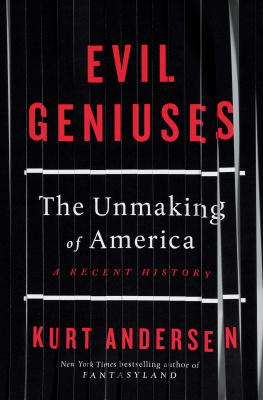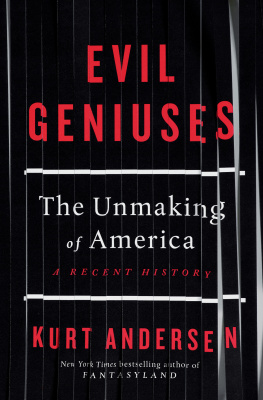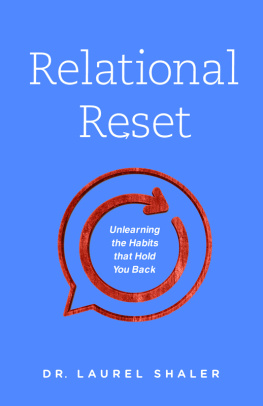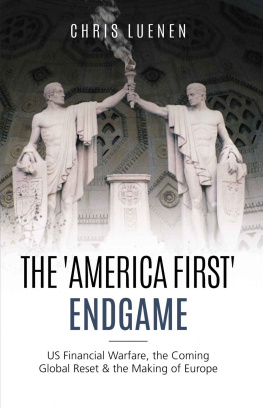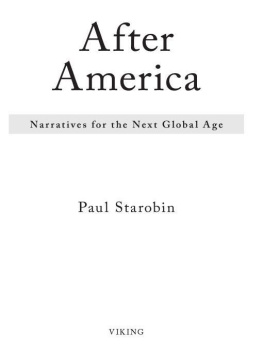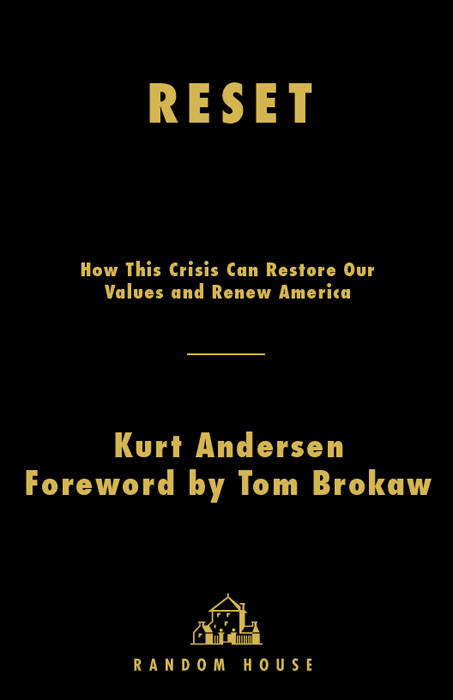Sincere thanks to Rick Stengel, who planted the seed that grew into this essay, an earlier and much shorter version of which he generously published in Time. (A few sections of the book appeared previously in The New Yorker and New York.)
Foreword
Tom Brokaw
A friend, a successful businessman with temperate consumption habits, suggests that America adopt a new mantra as it emerges from this hangover brought on by reckless excess. We should get up every morning and ask, What do I need? Not What do I want?
That strikes me as a simple but profound prescription to deal with the devastating effects of the binge that has defined so much of our recent past. It is also a useful code to follow as we design a more sensible future.
What has encouraged me greatly as I travel around the country, from the shaken baronies of Wall Street to the regional centers of commerce and back roads of rural America, is the common acknowledgment not just that a course correction is overdue, but that this is an exciting opportunity to construct a new model that will serve us better for the challenges ahead.
To do that will mean some serious attitude adjustment about how we calculate need versus want. Does everyone really qualify as a home buyer, or is it more realistic to admit that some are destined to rent? In this era of energy concerns, isnt it more sensible to build more efficient common-wall houses in larger green spaces than more McMansions on tiny lots?
In fact, housing, the temptress that caused so much of this trouble, is a metaphor for how we should emerge. The damage has been done. It is time to clear the wreckage and rebuild on a new foundation that can weather whatever storms come our way.
The new American economic culture should be about proportion and function, efficiency and accessibility.
In this provocative and insightful book, Kurt Andersen has given us a blueprint for what can be a new way of seeing America as a land of opportunity and sound values. How we respond to these challenges is a fundamental test of all of us.
ONE
We Let the Good Times Roll
Lets be honest: we all saw this coming for a long, long time.
In the early 1980s, right around when Ronald Reagan became president and Wall Streets great modern bull market began, we Americans gave ourselves over to gambling (and winning). We started thinking magically. From 1980 to 2007 the price of the average new American home quadrupled, and almost doubled even after adjusting for inflation. The Dow Jones Industrial Average climbed from 803 in the summer of 1982 to 14,165 in the fall of 2007a 500 percent increase after inflation.
From the beginning of the 1980s through 2007, the share of disposable income that each household spent paying off its mortgage and consumer debt increased by 35 percent. Back in 1982, the average American household saved 11 percent of its disposable income, but then the percentage steadily dropped, to less than 1 percent in 2007.
Not coincidentally, it was during this same period that state-sanctioned and state-run gambling became ubiquitous in America. Until the late 1980s, only Nevada and New Jersey had casinos, but now twelve states do, and forty-eight of the fifty have some form of legalized betting. Its as if we decided that Mardi Gras and Christmas are so much fun we ought to make them year-round ways of life.
We started living large literally as well as figuratively. From the beginning to the end of the long boom, the size of the average new American house increased by half, even as the average family became smaller. During the two decades ending in 2007, the average new American car got 29 percent heavier, 89 percent more powerful, and 2 percent less efficient. Meanwhile, the average American gained about a pound a year, so that an adult of a given age is now at least twenty pounds heavier than someone of the same age during the 1970s. Back in the late 1970s, 15 percent of Americans were obese; more than a third of us are now.
We saw what was happening for years, for decades, but we ignored it or shrugged it off, not quite believing that push would really, finally come to shove. The U.S. automobile industry has been in deep trouble for decades. Detroits unprofitability this last year has been breathtaking, but as long ago as 1980 (the year the federal government first bailed out Chrysler) newspapers were regularly carrying headlines about record losses at the car companies. Since 1983, GMs share of the American car market has steadily shrunk, from 43 percent to 22 percent. Yet all along, cheap oil and occasional upticksminivans and pickup trucks and SUVs! Saturn! the PT Cruiser!have prolonged the great denial, sustaining an increasingly desperate wishfulness that the good old days might somehow return.
For a decade now, ever since the Web really took off, almost every part of the old-media industrynewspapers, magazines, network TV, local TV, records, advertisinghas been in trouble, with only the rate, speed, and severity of shrinkage in question. But until very recently, most of them were managed as though their businesses wouldnt, couldnt ever really, finally die. But newspapers circulations are now evaporating at a stupendously accelerating rateby 5 and 10 and 20 percent a yearand last year Americans bought fewer than half as many CDs as they did in 2000.
We watched the median household income steadily decline since the end of the twentieth century but, but, but our houses and our 401(k)s were ballooning in value, right? Even (and sometimes especially) smart, proudly rational people engaged in magical thinking, acting as if the miraculous power of the Internet and its new economy would somehow, miraculously, make everything copacetic again. We all clapped our hands and believed in fairies. We gorged on free lunches.
The popular culture tried to warn us. For twenty years now, we have had Homer Simpsons spot-on caricature of the quintessential Americanchildish, irresponsible, willfully oblivious, fat and happy. And more recently, there was WALL-E, with all of humanity reduced to Homerized refugees from a despoiled earth. There was also a profusion of darker speculations concerning our decline and fallsome fact based, some entirely fictional, but all expressions of a shared and growing sense that our recklessness and complacency were sending us over the falls. There were news stories warning of a real estate bubble back in 2005, years before the bubble burst. Every season saw some new comparison of the United States to the late Roman Empire by authors of every ideological stripe. There were also the Left Behind novels, Cormac McCarthys The Road, end-of-the-world feature films (The Day After Tomorrow, 28 Days, I Am Legend) and documentaries (An Inconvenient Truth), and a rise of hysterical chatter about the cosmic meltdown scheduled by the ancient Mayans for 2012.
Even in opinion polls taken last year, before the crash, between 70 and 85 percent of Americans were saying they thought the country was on the wrong track. We knew, in our heart of hearts, that something had to give.
Especially those of us of a certain age. Remember when each decade, not long after it finished, assumed a distinct character? We all knew and know what the 50s mean, and they definitively ended with the Pill, JFKs assassination, and the Beatles. Then the 60s ended when countercultural utopians abandoned their fantasies and everyone else got tired of being perpetually alarmed and hectored. And the 70s ended when stimulants overtook depressants as Americas substances of choice, and AIDS appeared.


